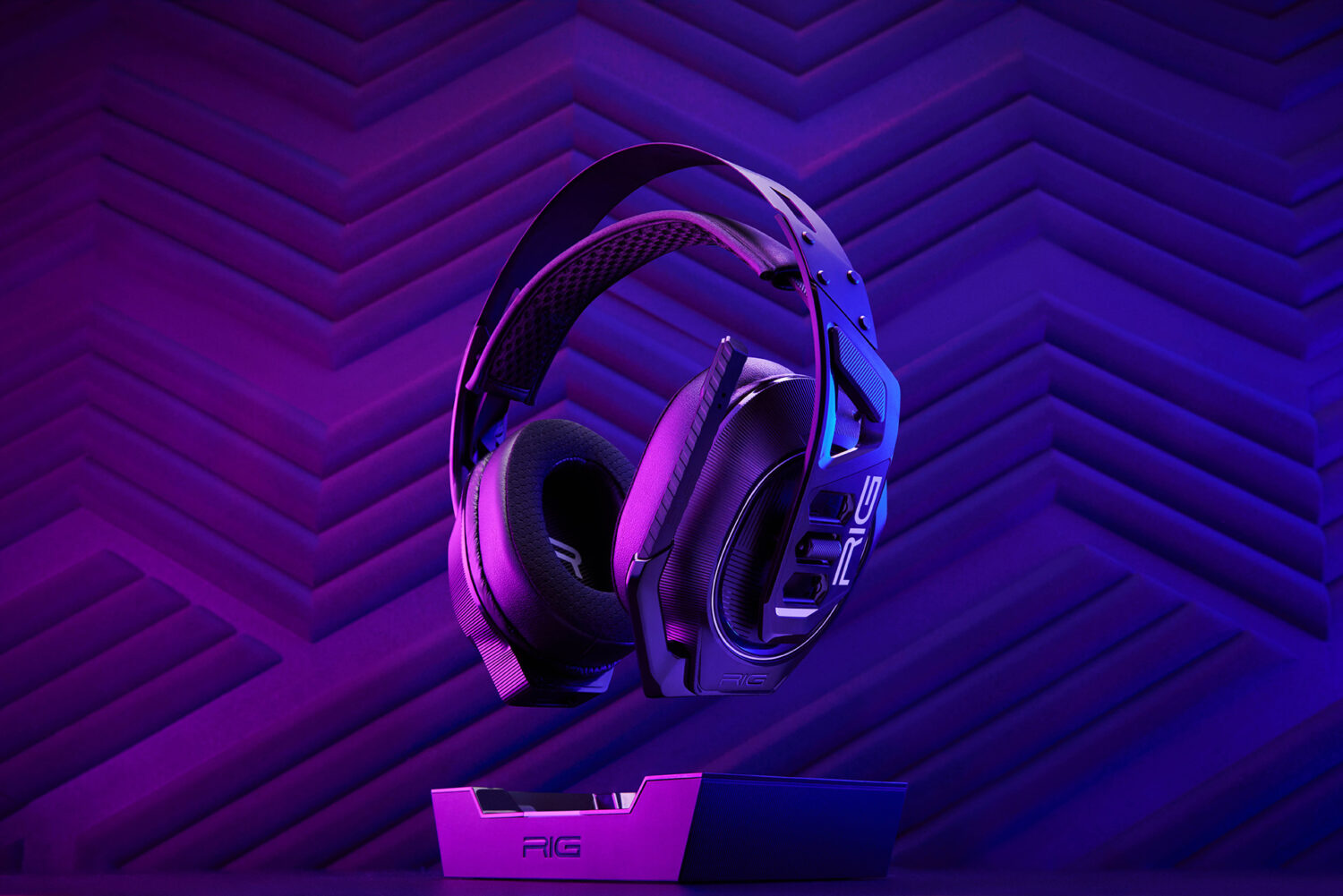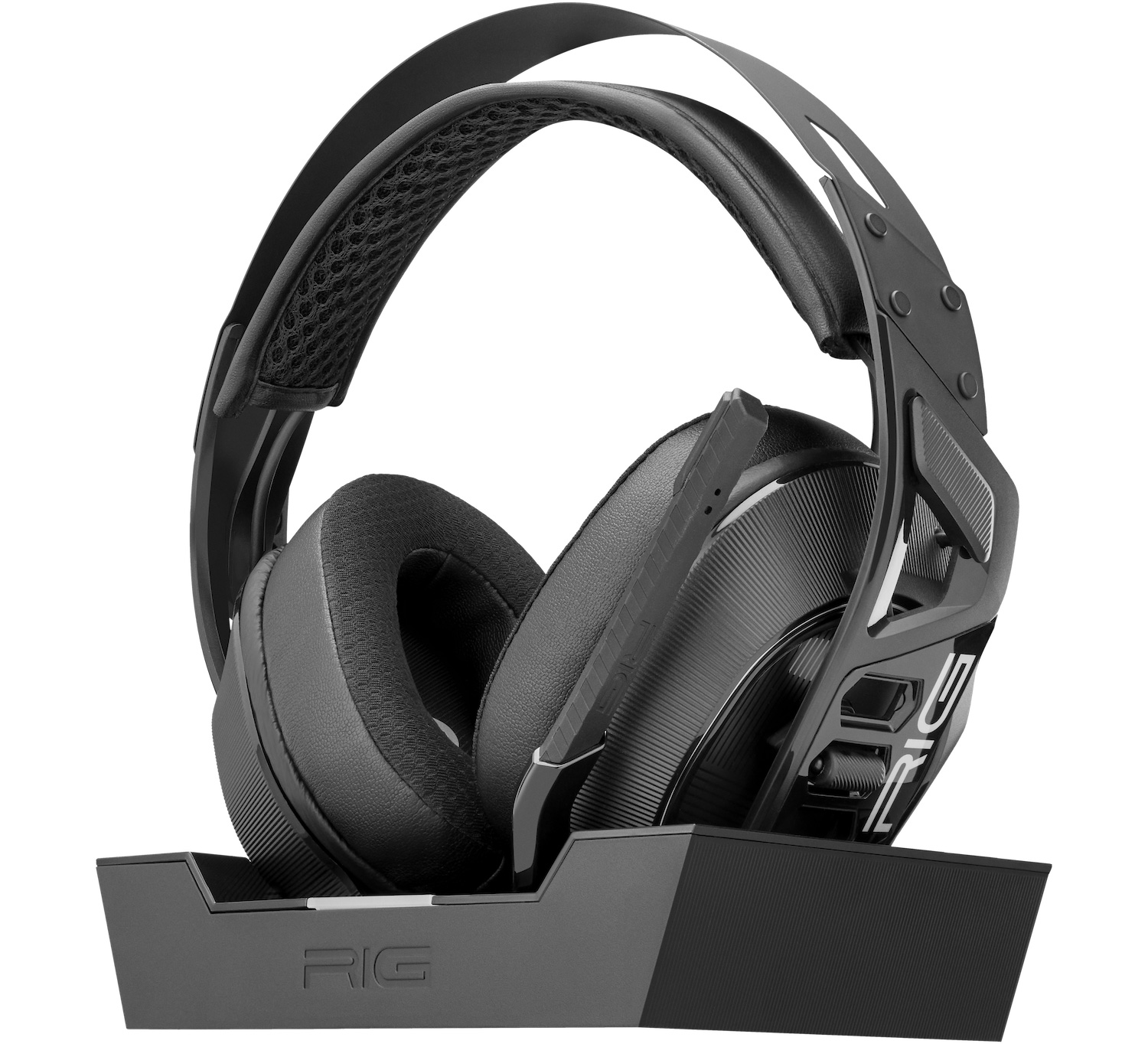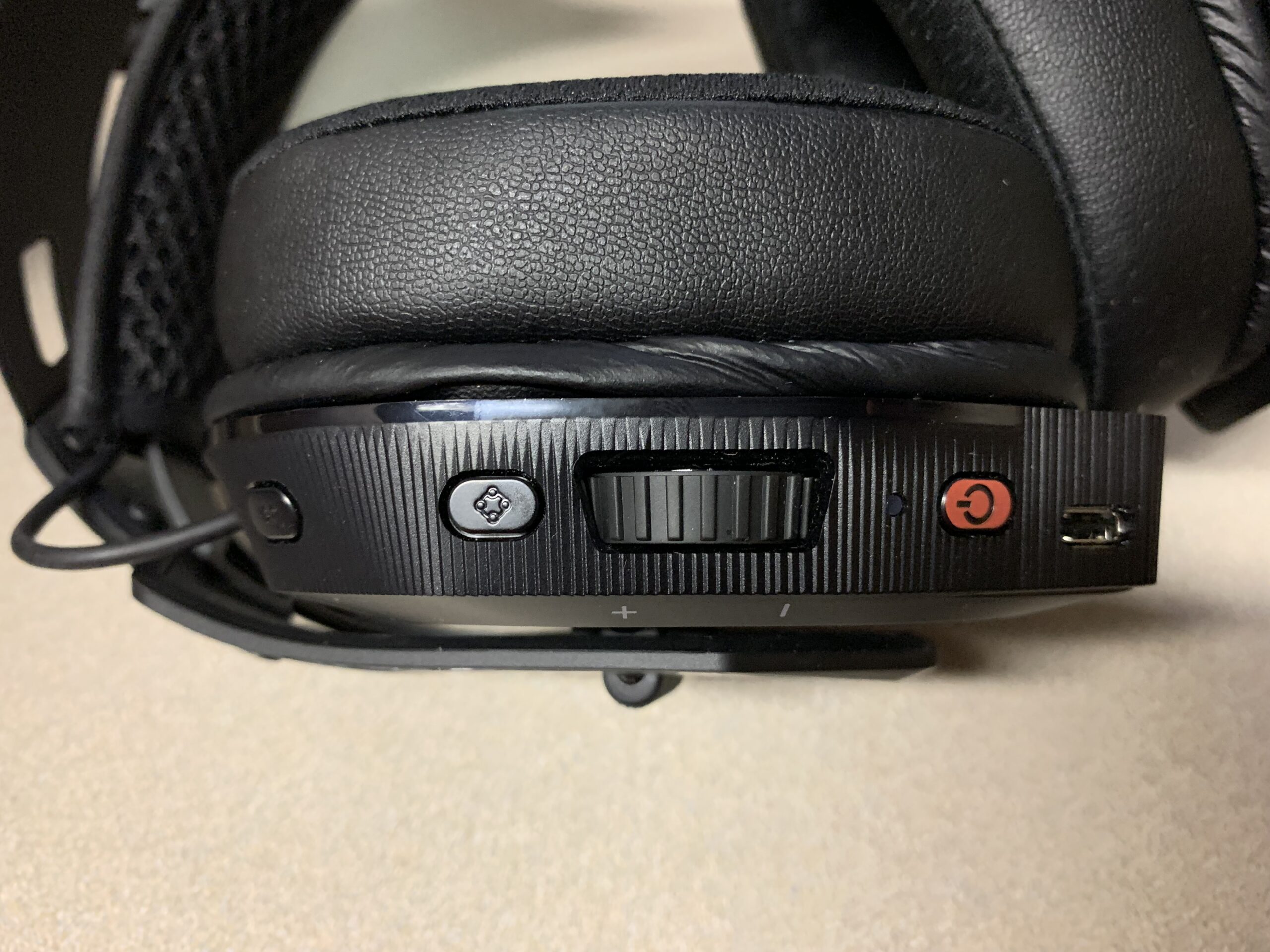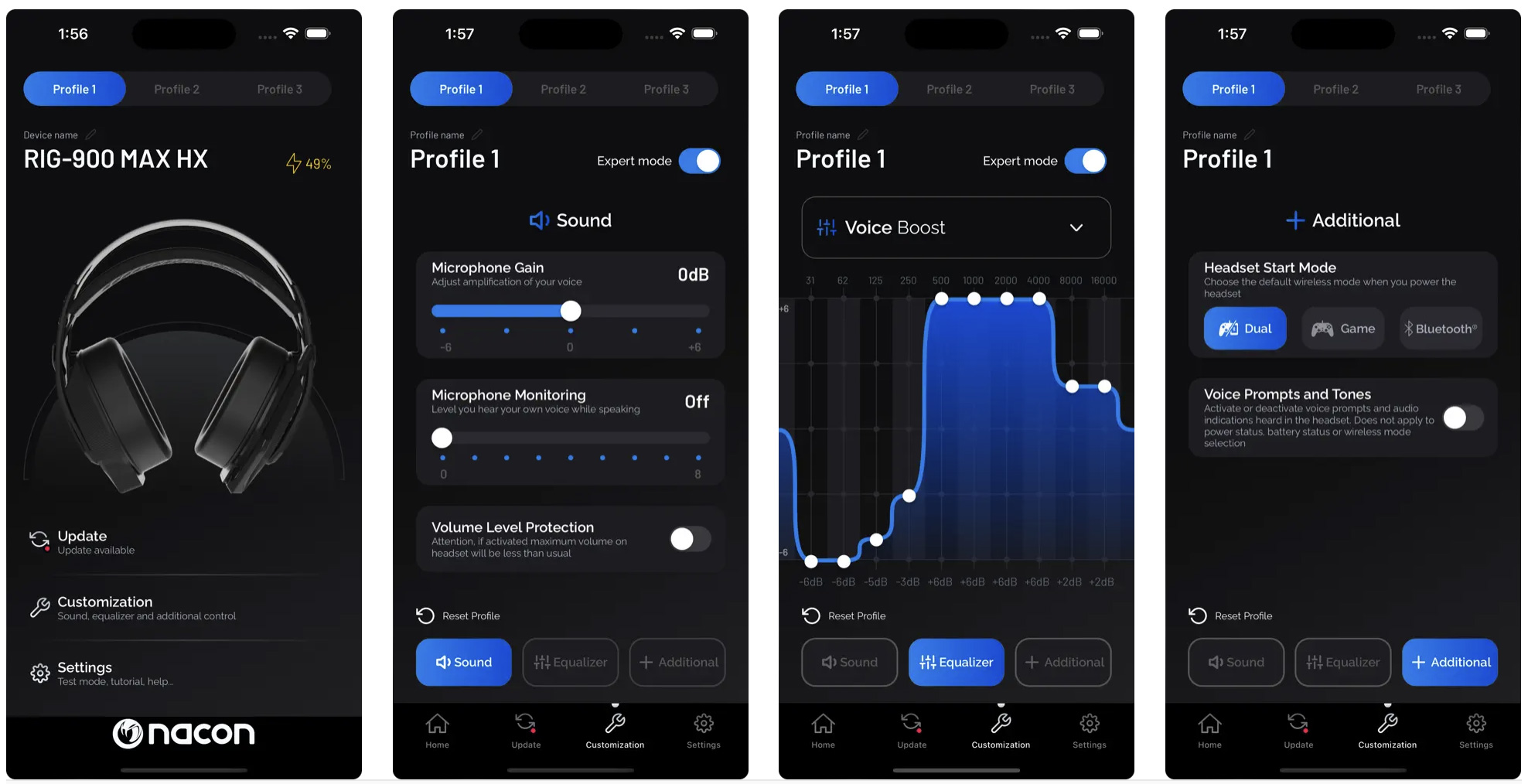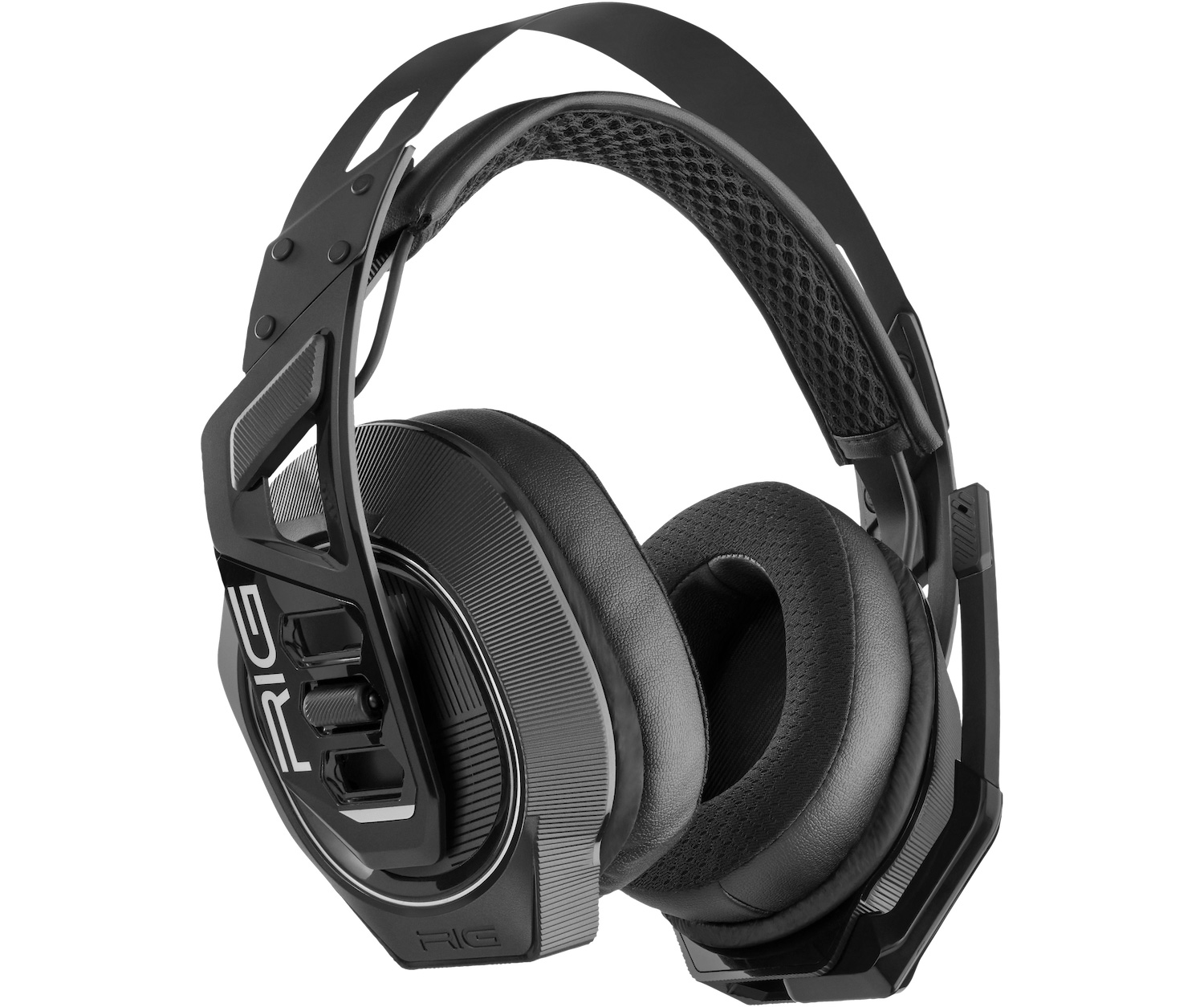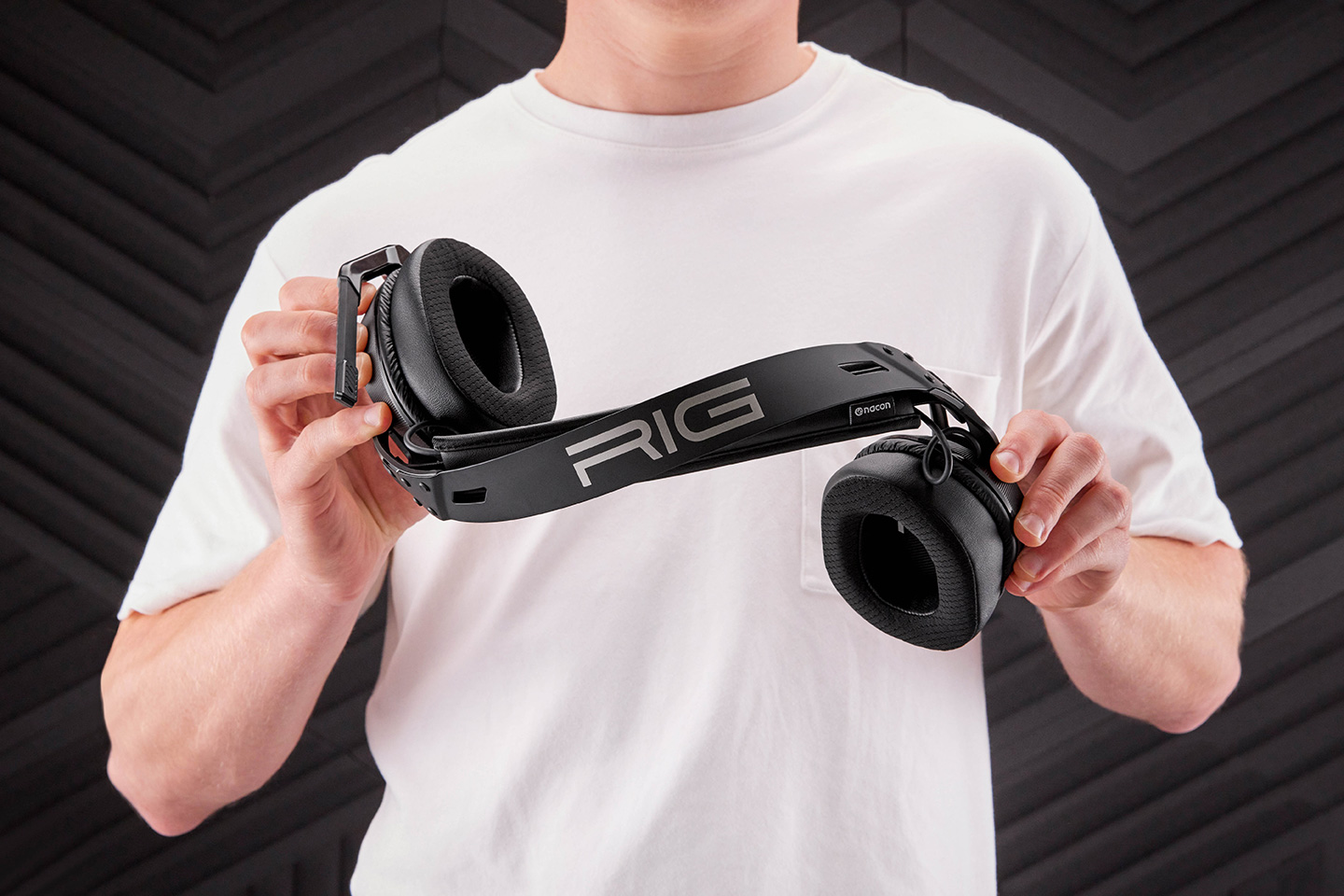Following our review of the RIG 600 Pro HS wireless headphones, it’s time to review another gaming headset from Nacon: the RIG 900 MAX HX. What separates the two models, and is the price difference worth it?
For starters, let’s take a look at what you get in the RIG 900 Max HX box. You get the headset, of course, but there is also a docking station, a wireless connection adapter, and a 43” USB male to USB female cable, with a small Bluetooth receiver like the ones used for a wireless mouse. The RIG 900 MAX HX was designed to connect with Xbox (Xbox Series X|S, Xbox One), but it is also compatible with Windows 10/11 PC, PlayStation, mobile devices, and, of course, Nintendo Switch.
Unlike the RIG 600 Pro HS, the 900 MAX HX is available only in basic black (more Batman approved gear).
The aforementioned docking station serves a couple of purposes. It holds and charges both the USB-A wireless adapter and the headset. There is a four point magnetic connection port on the bottom of the right can (similar to a MacBook magnetic charge port), that helps the headset sit readily, and a full charge on the dock should only take four hours. A full charge using the micro USB cable will only take two hours.
Connecting the device is handled via a Bluetooth button near the top of the left can. Press and hold this for 6 seconds and it will start the pairing process. I paired up to a couple of devices and it was pretty easy both times, but you can keep the Quick Start guide handy in case you forget the process. The left can also sports a multi-function button, the volume control knob, the power button, and the micro USB charging port.
The 900 Navigator mobile app for iOS or Android allows you to customize your sound a bit. It provides a three-band equalizer (bass, mid, treble), and the ability to adjust your mic sensitivity. The app can store three profiles, making it easy to change settings by intended use or by individual user. Dolby Atmos settings can also be adjusted via app. That doesn’t apply to the Nintendo Switch, of course, but is great if you’re also using the headphones with compatible systems.
Of course, sound is what matters most, and the RIG 900 MAX HX does a good job here. Even without the Dolby Atmos tweaks, these sound a little better than many headsets in this price range. I do suggest using the app to tweak the settings to your personal preferences. The punched up bass may be appropriate for games for action-heavy movies, but it clouds up the listening experience when switching over to music to dialogue-driven shows. Even still, the overall sound is clean, with good representation across frequencies even at low volumes.
Audio specs:
- Wireless – 2.4GHz USB-C wireless dongle and Bluetooth 5.1
- Headphone Frequency – 20 Hz–20 kHz
- Impedence – 32 ohms
- Headphone Sensitivity – 111 dBSPL/V
- Headphone Driver – 40mm bass boosted drivers
- Mic Frequency Response – 100 Hz–10 kHz
- Mic Sensitivity – -45 dBV/Pa
- Mic Pick Up Pattern – Unii-directional
- Mic to Signal Ratio – >42 dB
Visually, the RIG 900 MAX HX may underwhelm those looking for flash and high style. The only accents are some light gray (sliver-ish) pinstripes on the can housing, the word “Rig” at the ends of and across the top of the headband, and a short line under the can attachment points.
A highlight of the physical features is the retractable mic arm. In the up/closed position, the mic is muted; in the down position the mic is hot. Toggling between two produces a short pair of beeps (higher tone when hot, lower tone when muted). In the up/mute position, it looks a bit like there is an antenna on your left can, but you probably won’t care because you’re focused on blowing away the baddies in your crosshairs anyway.
The headband is a lightweight spring steel affair with a padded sleeve over a stretchy band to fit the unit to your head.
The cans have a faux leather wall and a cloth interface for your head. The grip is firm, but gentle, and the padding is very well done. Because I wear glasses, the long term comfort factor is a particular concern. I found it easy and comfortable to wear these for more than an hour or two. While the interface material doesn’t breathe well enough to keep the lobes really cool, they are also not noticeably hot. The size adjustment is accomplished by snapping the cans into one of three slots at the ends of the headband. The design indicators are only for Small, Medium, and Large, but there is a little extra wiggle room if you use different size notches between the left and right can (one M and one L works well for me).
One design feature I found less than thrilling is the port on the dock for the USB wireless adapter. There is no undercut to allow a place to grab the USB stick, and the end of the stick is even with the end of the dock. This leaves the user in a position of pulling on the stick in such a way that it may bend the connection point.
As a mid-range gaming headset, the RIG 900 MAX HX is quite capable. The drawback is that you’re paying for Dolby Atmos when that’s not available compatible with the Switch. Because of that, the RIG 600 Pro HS may be the way to go considering that unit is $150 less expensive. Or, you can spring for this higher-end model with better construction and sound with the hope that Nintendo rolls advanced audio into the new console we’re all expecting in 2024.
Update: 10/18/23 — Here is something which didn’t come up in the normal testing period. The Rig 900 has a habit of talking to itself. After the review was done, I still had the charging base connected to my Switch and the headset docked on the charger. I was doing some research, so the room was very quiet, when I heard a tiny voice calling out, “power on, battery high, do all…searching Bluetooth, searching USB…” I thought I accidentally left the headset on, so I turned it off and thought no more of it, until I heard it again an hour later. This has happened several times now so I wonder if the headset is “sleepwalking” or something. There is no connection with any other wireless device in the house. It only seems to happen when it is docked, so I don’t know exactly why it’s turning itself on, but there it is. Don’t worry, you really are hearing voices (… searching Bluetooth…).
Review: RIG 900 MAX HX dual wireless headset
Great
Nacon’s RIG 900 MAX HX dual wireless headset is very comfortable to wear, has a rather good sound balance and clarity, and includes some very handy features. Unfortunately, not all of those features are compatible with Nintendo Switch, such as Dolby Atmos. If your audio needs are Nintendo-specific, you’ll be paying for capabilities you can’t put to use.

